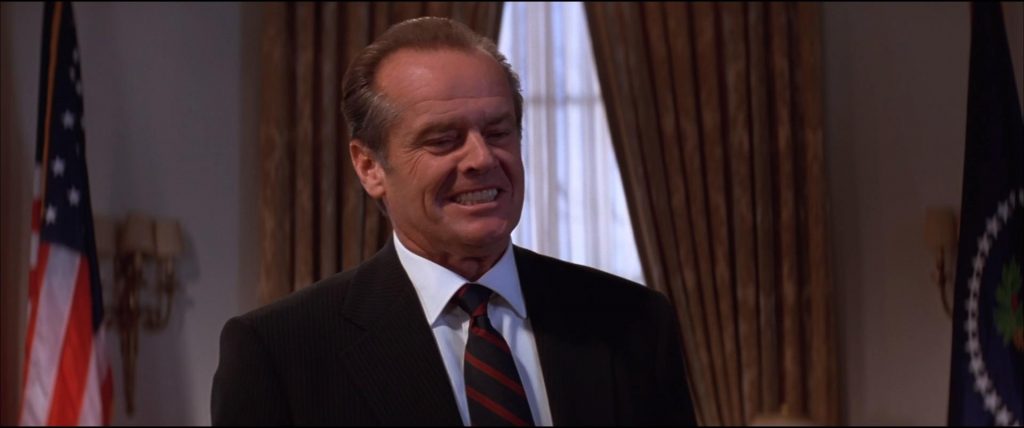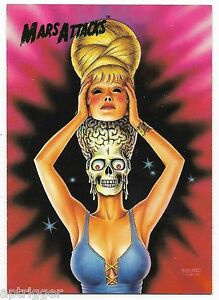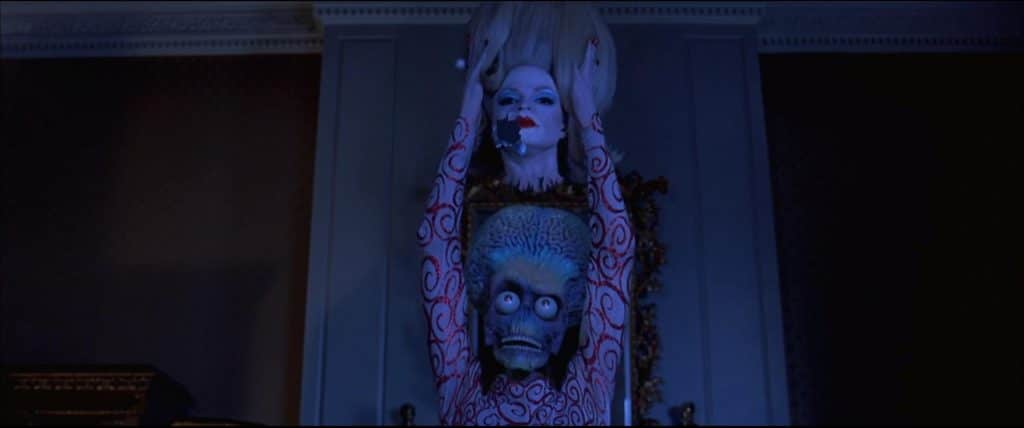With its Golden Age sci-fi gloss and darkly comic pretensions, Mars Attacks! shows the dangers of presuming that visitors come in peace.
When we think of Tim Burton, I imagine similar images pop up in all of our minds: gaunt, chalky protagonists with
If Mars Attacks! didn’t exist, it’s the movie I would wish to exist. I love sci-fi as much as any other Millennial film buff, but the grim survivalism of Battlestar Galactica and Firefly and the later Star Treks never connected with me. I prefer the pulpy, lurid sci-fi of yesteryear. The Raygun Gothic aesthetic that Forry Ackerman spent a lifetime advancing and collecting. The shiny, sterile architecture and chimerical, vaguely phallic contraptions of Hugo Gernsback and Frank R. Paul. The hamfisted morality plays of Forbidden Planet and The Day the Earth Stood Still. The curiosity about other life in The Man From Planet X and Mechte Navstrechu. The low-budget emotionality of Planet of the Vampires and The Space Children. Even at its grimmest in Ikarie XB-1 and On the Beach, sci-fi still carried the tacit faith that humanity would save itself.
The original Mars Attacks! trading cards contain sanguinary but captivating art penciled by Bob Powell and painted by Norm Saunders and story copy by Len Brown. Woody Gelman, the art director, wanted each card to look like it could serve as a film poster or the cover to a novel or a pulp magazine. As such, the cards look less like a story than a sequence of set-pieces.
I find it interesting to note that, for a guy who famously declared that he doesn’t regularly read comic books, Tim Burton’s choice of source material has shown a consistent attraction to sequential art. The Killing Joke inspired his take on Batman, but more than that, he’s pulled from trading card sets and children’s books. The best-known editions of Alice’s Adventures in Wonderland and Charlie and the Chocolate Factory contained iconic illustrations from John Tenniel and Quentin Blake, respectively. And what is an illustrated children’s book to its target audience if not a sequence of images threaded with text?
Topps’s original cards had no named human characters or much meat to its plot, so Tim Burton made a wise choice by using the cards as a springboard to tell his own story. Burton reenacts several of the illustrations on the screen—the flaming stampede that opens the film; the vaporized dog; the shrink ray; the destruction of the Eiffel Tower; the giant robot. The scene where Lisa Marie’s Martian character unmasks herself comes straight from a 1994 illustration by John Pound.
But Burton’s inspiration from the card series manifests in ways more metafictional. We first see the aliens on a long succession of TV screens that characters watch across the country. In the 1960s, millions of kids Burton’s age sat in front of cathode-ray tubes and learned about extra-terrestrials the same way, from Irwin Allen shows. Marie’s character chews gum that has a vague resemblance to the rock-hard rectangles that Topps put in their card packs until 1991. (I haven’t chewed Topps gum in 30 years and I still remember feeling certain that I was sucking on pink-stained plastic.) The radio plays a pivotal role in the final sequence, which echoes H.G. Wells’s unexpected reveal of the aliens’ weakness in War of the Worlds and Orson Welles’s infamously convincing radio adaptation.
If Mars Attacks! didn’t exist, it’s the movie I would wish to exist.
Mars Attacks!, as a whole, feels like a serendipitous rebuttal to Independence Day, which had come out five months earlier on a similar budget. While Roland Emmerich used his behemoth of hype and CGI to strike awe and terror into the hearts of audiences, Burton let us in on the silliness and the nostalgia. Where Emmerich’s humans are patriotic and tenacious, Burton’s are self-involved and provincial. Where Emmerich leaned heavily on Will Smith and Bill Pullman as action heroes, Burton turned everyone into a character actor, even Pierce Brosnan. (Jack Nicholson was always a character actor and I won’t be taking your questions at this time.) While Independence Day’s ’90s direction seems sclerotic today, Mars Attacks! holds up because, where the CGI doesn’t work, its dated quality adds to the film. Mars Attacks! was Independence Day for sci-fi fans who knew better than to take all this seriously.

And as strange as it may seem, for a film in which at least two-thirds of the principal characters die, Burton’s take on retro sci-fi preserves its most important quality: hope. Naïve as they appear, the characters never lose hope that they’ll either defeat or make peace with the Martians. Half the comedy lies in the humans repeatedly falling for the Martians’ perfidy, but there still remains something charming about their gullibility. In a world of grim and gritty sci-fi (which, one must admit, Burton helped create with his Batman films), there’s something to be said for optimism.
I’ll be the first to admit that I’m credulous, I have difficulty with social cues, and I hate confrontation. If I was a character in this movie, I’d probably die before the credits finished rolling. But I’ve also found myself unable to relate to Burton’s characters after Big Fish, and I think this is why. Burton forgot what Emmerich never learned: all the sophisticated effects and aesthetic experimentation in the world can’t make a good film if we don’t feel a kinship with its characters.
I should find it terrifying that I relate to characters who die by the boatload at the hands of Martians, but it’s the only way I know how to live.

